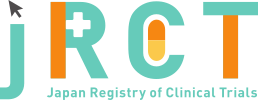臨床研究等提出・公開システム
|
April. 20, 2023 |
|
|
May. 22, 2025 |
|
|
jRCTs042230011 |
Establishment of a novel rehabilitation treatment for gait disorders in central nervous system diseases |
|
Non-invasive brain stimulation and rehabilitation training |
Ueki Yoshino |
||
Mirai Kousei Hospital, Nagoya City University School of Medicine |
||
1501 Sekobo 2-chome, Meito-ku, Nagoya City, Aichi |
||
+81-52-704-2345 |
||
yueki@kuhp.kyoto-u.ac.jp |
||
Ueki Yoshino |
||
Mirai Kousei Hospital, Nagoya City University School of Medicine |
||
1501 Sekobo 2-chome, Meito-ku, Nagoya City, Aichi |
||
+81-52-704-2345 |
||
yueki@kuhp.kyoto-u.ac.jp |
Recruiting |
April. 20, 2023 |
||
| May. 12, 2023 | ||
| 240 | ||
Interventional |
||
randomized controlled trial |
||
double blind |
||
placebo control |
||
parallel assignment |
||
treatment purpose |
||
1.Patients with established diagnosis of Parkinson's disease and Parkinson's syndrome (progressive supranuclear palsy, basal ganglia cortical degeneration, dementia with Lewy bodies, multiple system atrophy, cerebrovascular parkinsonism, normal pressure hydrocephalus, etc.), corticospinal tract disorder (stroke, encephalitis, etc.) and cerebellar ataxia (spinocerebellar degeneration, etc.) by the Department of Neurology |
||
1.History or complication of other neuropsychiatric disorders |
||
| 40age old over | ||
| 90age old under | ||
Both |
||
Neurological diseases |
||
Gait practice is performed while applying electrical stimulation such as tDCS (transcranial direct current stimulation) and tACS (transcranial alternating current stimulation). |
||
Comparison of gait function (gait speed and gait variability) between brain stimulation and sham stimulation interventions |
||
1.MDS-Unified Parkinson's Disease Rating Scale |
||
| Nagoya City University Certified Review Board | |
| 1 Kawasumi, Mizuho-cho, Mizuho-ku, Nagoya-shi, Aichi | |
+81-52-853-8346 |
|
| rinshou-kenkyu@med.nagoya-cu.ac.jp | |
| Approval | |
Mar. 09, 2023 |
No |
|
No |
none |
